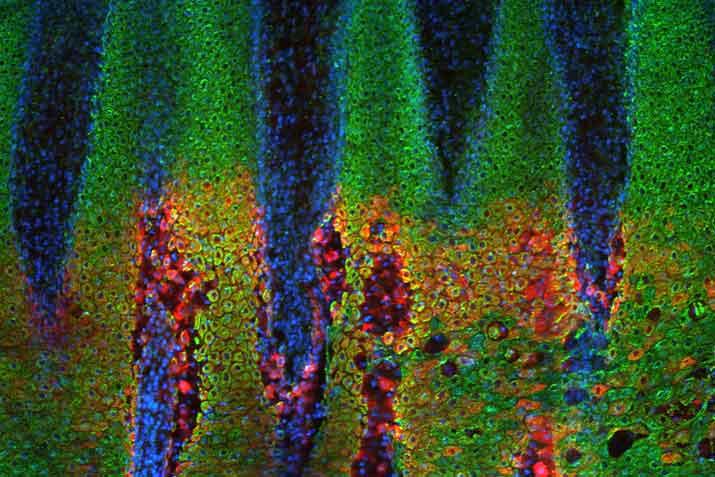New insight into the process of interaction between foot-and-mouth disease virus (FMDV) and host cells, could lead to the development of anti-virals capable of blocking the virus from entering cells and preventing infection.
The research, a national and international collaboration, published in Nature Communications and supported by FMDV experts from The Pirbright Institute (Dr Bryan Charleston, Institute Director and senior scientist, Dr Julian Seago), was prompted by advances in high resolution cryo-electron microscopy (cryo-EM)1. Unlike other techniques, this rapid imaging technology enables samples to be studied at very low temperatures and viewed in their natural state.
Previous research to view FMDV at almost atomic levels of detail, revealed an exposed flexible `loop` on the surface of the otherwise smooth capsid (outer shell) - called the GH loop. FMDV infects a host cell by binding to a receptor protein on the cell surface called integrin via the GH loop.
Integrins are used by FMDV as a receptor for cell entry but until now, it has not been possible to visualise the process of engagement due the flexibility of the integrin binding portion of the viral capsid. Improved cryo-EM techniques enabled structural biologists at Oxford University to observe the virus-host cell interaction more effectively and overcome the previous challenge of visualising the flexible attachment site.
Dr Seago said: “There are seven distinct serotypes of FMDV, but in this study we focussed on serotype O as it poses the most significant threat globally and is used in around 80% of vaccines. Using high resolution cryo-EM we were able to observe that FMDV extends its GH loop up and away from the virus surface to engage the integrin receptor.
“Detailed mapping of the binding mechanisms between FMDV and host cells may ultimately enable the design of new anti-virals capable of inhibiting the virus from entering host cells. Furthermore, our use of cryo-EM in this research would suggest its usefulness in studies of other virus-receptor interactions.”
1. The Electron Bio-Imaging Centre (eBIC) at Diamond provides scientists with state-of-the-art experimental equipment and expertise in the field of cryo-electron microscopy, for both single particle analysis and cryo-tomography. A partnership with the University of Oxford allows users to access the Polara, a high-containment cryo-electron microscope.
